Key Differences Between Bluebirds and Blue Jays
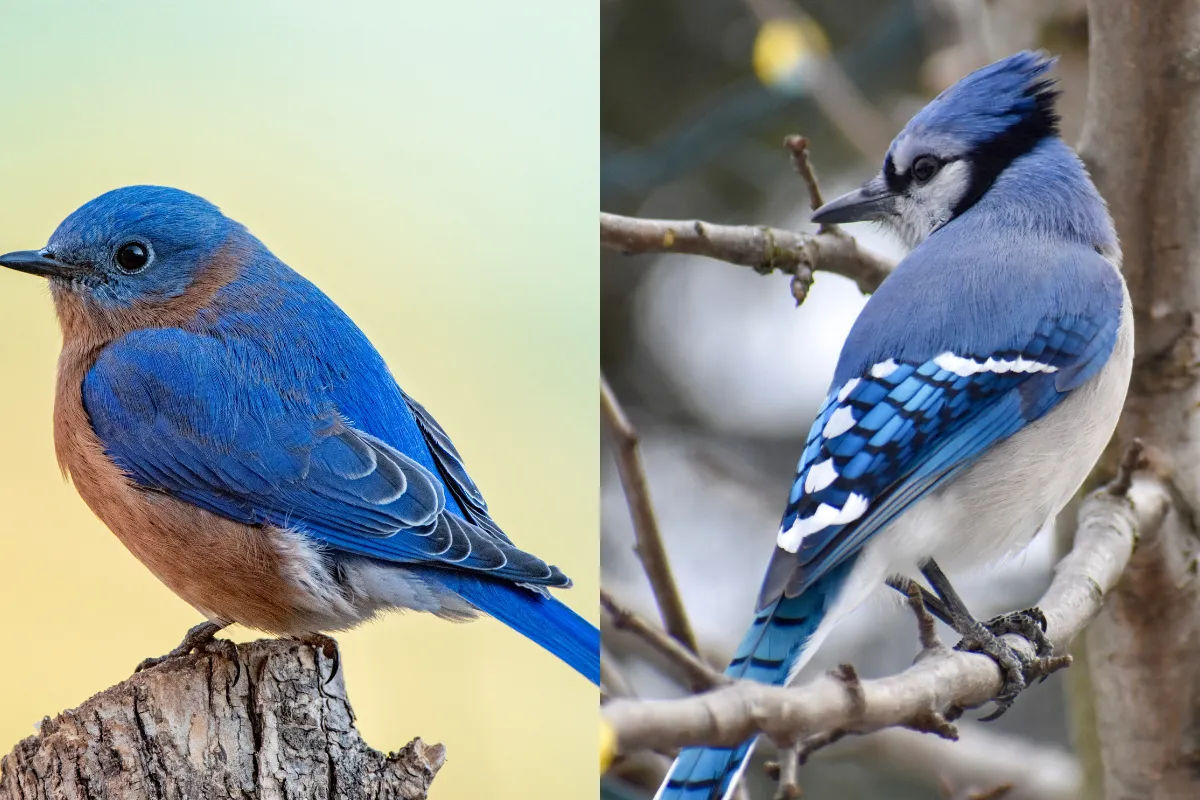
Bluebirds and Blue Jays are two types of birds that have some similarities because they both have blue feathers, which makes them look beautiful.
Most of the birds’ observer gets confused about the understanding between Blue Jays and Bluebird since both of them are of the same colour.
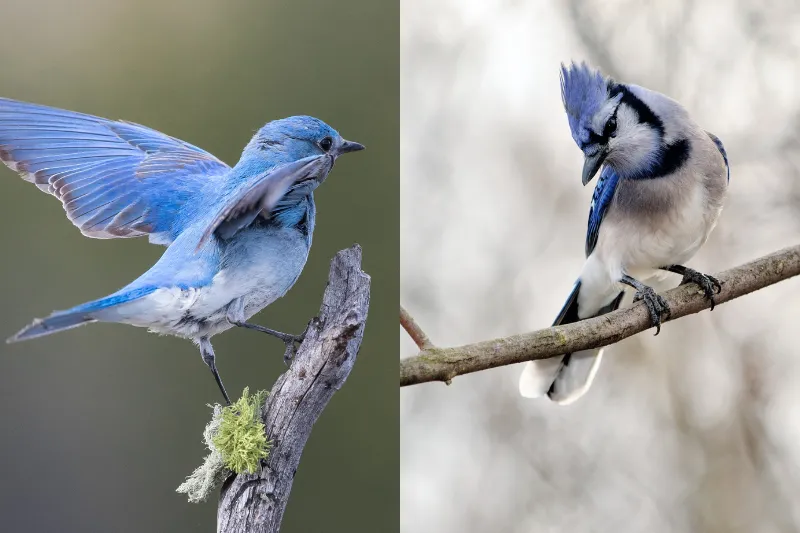
Blue Jays enjoy living in forests with lots of trees. They can be found in both deciduous and coniferous forests.
Sometimes people mix them up because of this. But actually, they are different in many ways. We will talk about how they look different, where they like to live, what they like to eat, how they behave, and whether they need help to be safe.
So, we will learn the differences between Bluebirds and Blue Jays and how they are both special in their own way.
Physical Characteristics DIfferences
Bluebirds
Bluebirds are generally 6.5 to 8 inches in size, with short and narrow tails. Their breast area is larger than the other body parts and is light brown or orange in colour. Whereas the undercarriage of a Bluebird is usually white.
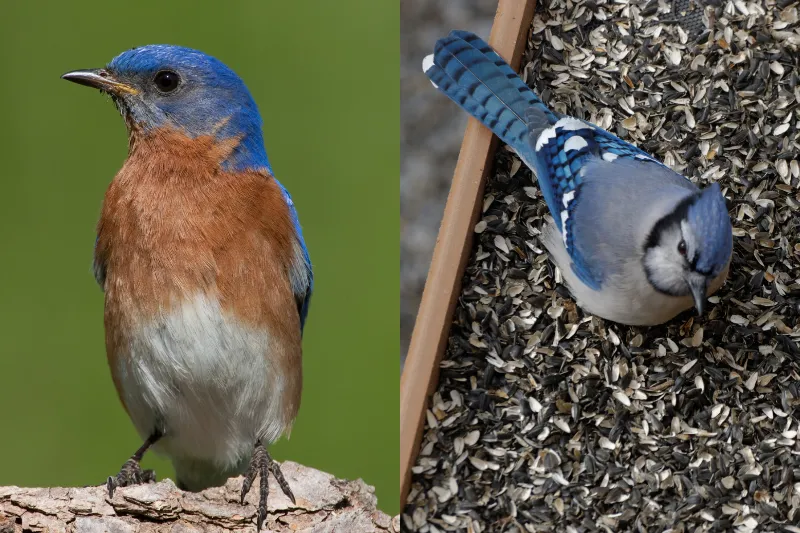
Blue Jays are much larger and generally 9 to 12 inches in size
Bluebirds have very short legs and a large rounded head which helps them in flying swiftly. The chest of the bluebird is also quite sleek, leading down to a plump stomach.
BlueJays
On the other hand, Blue Jays are much larger and generally 9 to 12 inches in size from bill to tail and weigh around 70 to 100 grams.
They also have a wingspan of 13 to 17 inches. Blue Jays have slightly bigger bodies with thick necks and broad chests.
However, the significant difference in physical appearance between Bluebirds and Blue Jays is that Blue Jays have a blue crest on top of their heads.
Habitat Differences
Bluebirds
Talking about the habitat of Bluebirds and Blue Jays. Bluebirds prefer to build their nest in open fields and sparse woodland areas.
They are also often found around urban trails and golf courses. Since most of the habitats have been destroyed for human living.
Blue Jays
Meanwhile, Blue Jays enjoy living in forests with lots of trees. They can be found in both deciduous and coniferous forests.
The similarity between Bluebirds and Blue Jays is that both of them are native North American birds. So, their natural habitats do not vary distinguishably.
| Read More: How to Attract BlueBirds? A Complete Guide >>>
These are the most common areas where Bluebirds and Blue Jays are found.
- Bluebirds: New Mexico, Texas, Arizona, North Dakota, Nevada, South Dakota, western Kansas, and western Nebraska.
- Blue Jays: Idaho, Utah, Oregon, Montana, and Washington.
Diet Differences
Bluebirds
Bluebirds are known as insectivores, meaning they mainly eat insects and small invertebrates like spiders, snails, and worms. Bluebirds have very smaller beaks, which limit their diet. So, they consume only insects and fruits.

(Image Source : Photo by Hal Moran: Pexels.com)
Bluebirds may also eat fruits and berries as an alternative food source when insects are scarce. This is why you may see them feeding on berries in your backyard during certain times of the year.
The food consumed by Blue Birds are Snails, grubs, caterpillars, grasshoppers, pokeweed, hackberries, etc.
Blue Jays
On the other hand, Blue Jays have a larger, more robust beak and can eat a variety of diets. They primarily consume all sorts of nuts, seeds, and acorns.
The food consumed by Blue Jays is very different from that of Bluebirds. Since Blue Jays are omnivorous birds. They consume 75% plants and vegetable matter and 25% insects.
Also, for your information, Blue Jays eat different diets depending upon the seasonal changes. During winter, they generally consume; acorns, seeds, berries, and nuts.
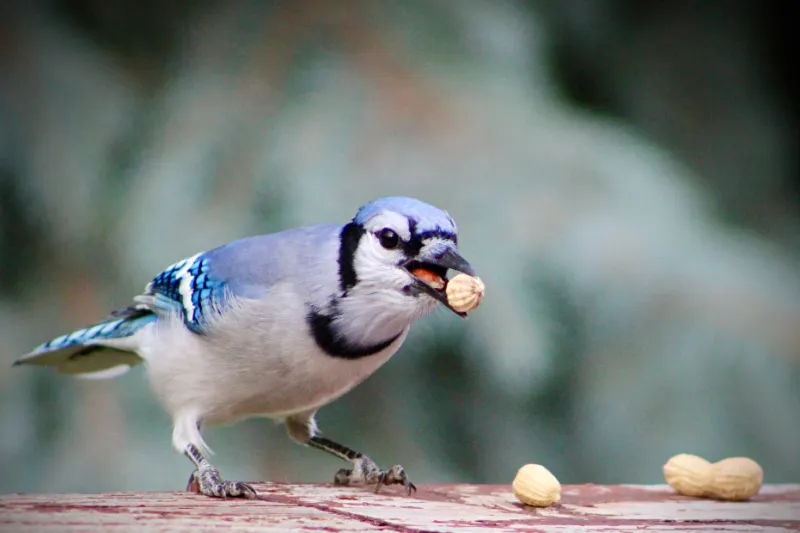
Meanwhile, in the summertime, Blue Jays eat worms, beetles, larvae, etc.
There are also rumours of Blue Jays eating other birds and snakes, but that is untrue. But, they are powerful birds and can kill small birds like Bluebirds.
Behavioural Differences
Bluebirds
There is a distinguishing difference in the behaviour of Bluebirds and BlueJays. Bluebirds and Blue Jays also differ in their behaviour. Bluebirds are known to be peaceful and quiet birds.
They don’t usually live in large groups. Instead, they prefer to be with their family members or a small group of other Bluebirds.
Unlike some birds, Bluebirds don’t get very territorial, which means they don’t feel the need to protect a specific area for themselves or their family. They also don’t fight with other birds to defend their food. Instead, they tend to share and coexist with other birds in their environment.
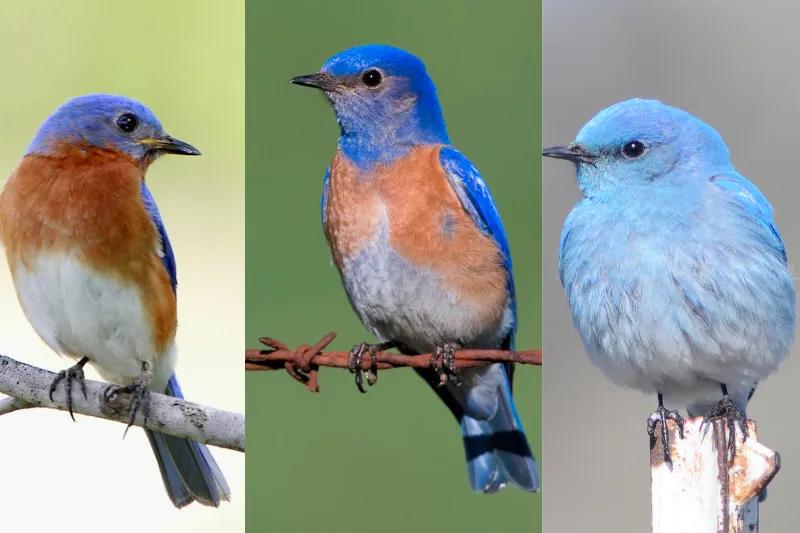
Bluebird behaviours are similar to woodpeckers. They can produce two to four offspring during the summer and spring times.
Male Bluebirds search the nest site to attract the female Bluebirds for mating. They usually sing, flap their wings, and place cavities to lure the female Bluebirds.
If the female accepts the male’s offer, she will build the nest alone on her own and hatches the eggs.
Blue Jays
Blue Jays are quite different from Bluebirds in their behaviour. They tend to be highly territorial, which means they try to protect a specific area that they consider their own.
They can become aggressive towards other birds, chasing them away from their food sources or nesting sites. This is because they are very protective of their territory and want to ensure they have access to the resources they need to survive.
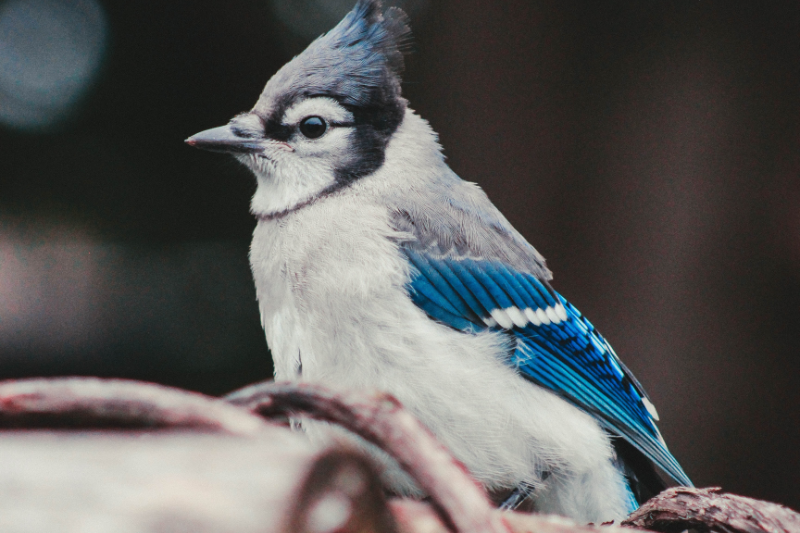
However, Blue Jays are also highly social birds and are known to communicate with each other through a variety of different sounds, from loud calls to soft murmurs.
These vocalizations help Blue Jays to stay in touch with each other and to coordinate their behavior, whether they are foraging for food or defending their territory.
The mating season of Blue Jays starts in mid-March. It peaks in mid-April to May and extends into July.
| Read More: What Do Blue Jays Eat? A Complete Guide To Feed Blue Jays >>>
However, they are open about nesting locations. But, they prefer to build the nest at a tree height of 10 to 33 ft.
If you find building the nest by Blue Jays, both males and females build the nest together. Since they form a monogamous bond for life.
During the time of hatching the eggs, male Jays feed the female while she is brooding the eggs.
Cultural significance
Bluebirds
Bluebirds have a major influence on the Irowuois cosmology. Iroquois are the native people from Northeast America/Turtle island.
It is believed that, the call of Bluebirds wards off the icy power of Sawiskera (Iroquois god).
Blue Jays
Meanwhile, Blue Jays represent the old African American folklore culture of the southern US. It also speaks about the significance of metaphysical creatures.
In some story, it is said that the Blue Jays was credited with making the earth.
FAQ on Differences Between Bluebirds and Blue Jays
What is the physical difference between Bluebirds and Blue Jays?
Bluebirds are small, typically measuring between 6 and 8 inches in length, while Blue Jays are much larger, measuring between 9 and 12 inches in length.
Bluebirds have a bright blue back, wings, and tail, with a rusty-red breast and white belly, while Blue Jays have a blue head, back, and wings, with a white belly and black markings around their eyes.
Where do Bluebirds and Blue Jays prefer to live?
Bluebirds are often found in rural areas, such as fields, meadows, and forests with open spaces.
Blue Jays, on the other hand, prefer wooded areas and are often found in urban and suburban areas with trees and bird feeders.
What do Bluebirds and Blue Jays eat?
Bluebirds are primarily insectivores, meaning they feed on insects and other small invertebrates such as spiders, snails, and worms. They will also eat berries and fruit when insects are scarce.
Blue Jays, on the other hand, are omnivores and will eat a wide range of foods, including insects, nuts, seeds, fruit, and small mammals.
Are Bluebirds and Blue Jays aggressive birds?
Bluebirds are not territorial and do not aggressively defend their feeding areas.
Blue Jays are highly territorial and aggressive towards other birds, typically chasing them away from food sources.






